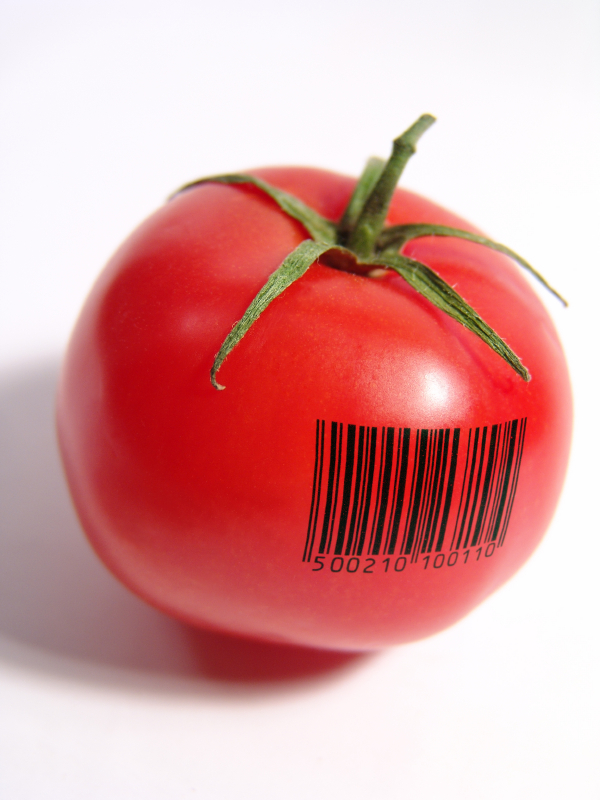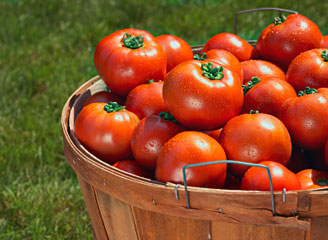To understand the true violence of our food system, you have to visit the largely hidden areas where production is concentrated.
 Do you know where your tomatoes come from?I learned that in the summer of 2007, when I visited the Corn Belt. Before that, I had been writing for years about industrial corn and soy. I could tell you about the biodiversity-snuffing nature of monocrops or the annual cascade of synthetic and mined fertilizers required to produce 40 percent of the globe’s corn.
Do you know where your tomatoes come from?I learned that in the summer of 2007, when I visited the Corn Belt. Before that, I had been writing for years about industrial corn and soy. I could tell you about the biodiversity-snuffing nature of monocrops or the annual cascade of synthetic and mined fertilizers required to produce 40 percent of the globe’s corn.
But I had to get my feet on the ground to get my head around the situation: The Midwest’s corn and soy fields represent as impressive and brutal an example of humanity’s will to transform landscapes to its whims as any I’d seen — as stunning as the Manhattan skyline, or the view from an airplane of the valley occupied by Mexico City.
The violence on display wasn’t only ecological. One thing I’ve learned from my work as a food-politics writer is this: Processes that devastate the earth also tend to abuse human beings. In corn country, the land had been largely cleared of people over the past two generations, but a human element lingered. Here and there amid the endless carpet of corn and soy, you could see abandoned farmhouses withering in the sun, evidence of the long-term economic calamity that has knocked 40 percent of farmers off the land since 1975.
I saw a human element, too, in Hardin County, Iowa, where 18,000 people live amid the stench of 1 million miserable hogs stuffed by the thousands into low-slung buildings. (I wrote about it here.)
This week, I got another jolt of food-system reality from a place I had written about before but never seen: Immokalee, Florida, epicenter of U.S. fresh-tomato production from December to March. In this case, the human element — too often forgotten, ignored, or underemphasized in environmental circles — slaps you in the face.
In corn country, agriculture has been mechanized, making human beings nearly 100 percent redundant. But the process of harvesting tomatoes destined to be consumed fresh resists mechanization. The fruit is too fragile; only human hands can do the job. The food industry’s solution: treat human beings like machines. Again, you almost have to see it to believe it.
Few outsiders would know about the situation in Florida tomato country without the methodical, patient work of the Coalition of Immokalee Workers, a worker-led effort that began in 1993 to organize the area’s largely immigrant workforce.
Since that time, the Coalition’s tactics — which have included general strikes and national boycotts — have succeeded in drawing international attention to working conditions in the area. They’ve inspired hearings in the U.S. Senate, wrung concessions out of some of the globe’s most retrograde food corporations, and gained the attention of media outlets ranging from The New York Times and Gourmet Magazine.
But for all their success, wages in Immokalee-area tomato fields remain well below poverty level, and — as I saw in my visit — normal living conditions would be familiar in the apartheid-era townships of South Africa.
I visited Immokalee at the invitation of the CIW, as part of a day-long delegation of a dozen or so writers and activists in the sustainable-food space. I think the aim was to convince sustainable-food advocates that social justice counts counts as a sustainability issue, too.
CIW staffer Gerardo Reyes Chávez, 31, who began working in vegetable fields in central Mexico at 11 before migrating to Immokalee at 21, returned to that point repeatedly. Pigs in U.S. factory-style facilities get more attention than people working in factory-style tomato farms, he said; outbreaks of food-borne illnesses like salmonella and E. coli generate more outrage than revelations of modern-day slavery in Immokalee.
To get to Immokalee, you fly into the small coastal city of Fort Myers — an epicenter of the great housing boom of 1995-2007, perhaps the most manic speculative bubble in the history of the United States.
Accordingly, Fort Myers is now ground zero of an epochal bust, aptly described in a recent New Yorker article by George Packer called “The Ponzi State.” Despite the depressed economy, the airport still had a healthy if modest buzz of snowbirds entering the promised land.
From there, you make your way an hour inland, through tomato fields and orange groves, to the town of Immokalee. If sprawling Fort Myers is clearly built to serve the needs of car-reliant business travelers, vacationers, and retirees, Immokalee is geared to concentrate workers in a dense center, so that they can be transported efficiently to the surrounding fields.
Downtown Immokalee consists of a few ramshackle buildings with small shops, surrounded by a sea of farm-worker housing, mostly falling-apart trailers. Here and there, police cars idle, the cops inside looking out blankly at the scene around them.
The metaphorical center of the town is a large parking lot — empty by day, but in the early morning teeming with old school buses driven by crew leaders there to choose from among thousands of workers for the day’s harvest.
Right across the street from the parking lot stands the CIW’s community center, a simple, functionalist building whose very existence quietly counteracts the power represented by the wheezing, grower-owned buses. Honestly, the community center at times felt like liberated space in a war zone — a place dedicated to improving worker lives in a place seemingly designed to destroy them.
The day we spent in Immokalee — Wednesday, March 4 — began there. It was the base we returned to as we ventured out to tour the town, inspect a typical worker house, and visit a tomato field a few miles away to watch workers harvest.
It was a brisk morning — probably 45°F — and when we arrived at CIW center at a little after 6:00 a.m., the sun still had yet to rise. We had gotten there a little late for the crush of buses, which starts at 4:30 a.m. and peaks about an hour later.

Lucas Benitez, a founder and current co-director of the CIW who himself spent years in the area’s tomato fields, welcomed us to the community center, plied us with coffee, and led us into the parking lot to explain how workers begin their day. By then, only a couple of buses idled in the lot, surrounded by a few dozen workers eager for the last chance of the day at making some money.
While Lucas talked to us, waiting workers would occasionally join our group to see what we were up to.
Lucas explained that in the Immokalee area — which supplies 90 percent of the winter tomatoes grown in the United Stares — four landowners control the tomato trade. Essentially, workers show up en masse and hope to be chosen by the crew leaders who drive the buses. Workers sometimes get a several-week gig picking for
a single grower. Mostly, though, they have to head out each morning to seek the day’s work.
They don’t always get it. When the state’s construction industry boomed, workers streamed away from Immokalee to get better paid work building houses. With that industry now ground to a halt, the workers are streaming back. On a typical day, Benitez reckons, fully a quarter of the workforce is idle.
On Monday, I’ll continue this diary, explaining what we saw when we entered a typical worker house, why renting to impoverished workers might be the last lucrative venture in Florida’s eviscerated real estate market, how dismal every-day conditions create an environment conducive to extreme cases of slavery, and what happened when one of our delegation — Stuffed and Starved author Raj Patel — theatrically tried to call Florida Gov. Charlie Crist to confront him about his laissez-faire attitude to worker enslavement.


